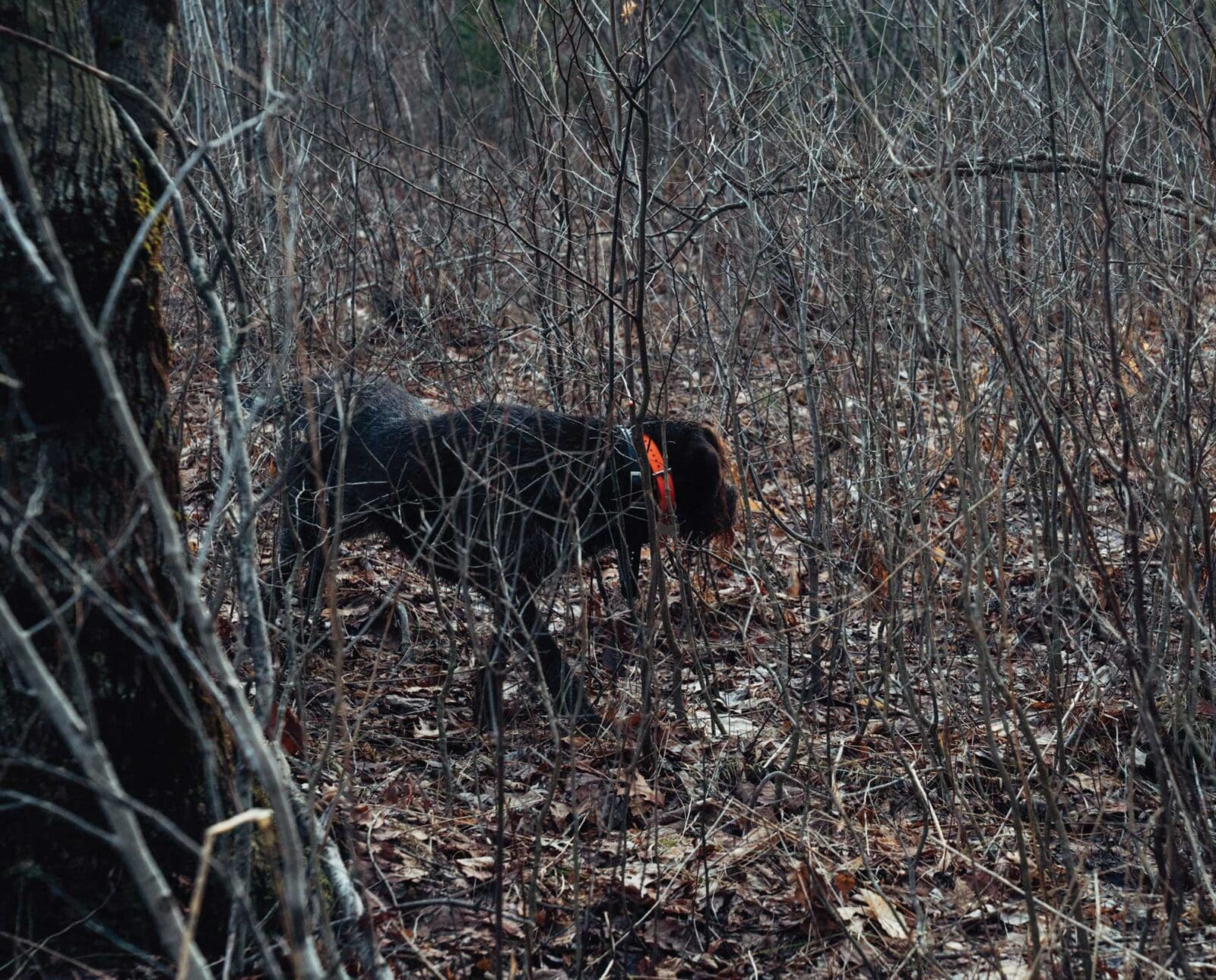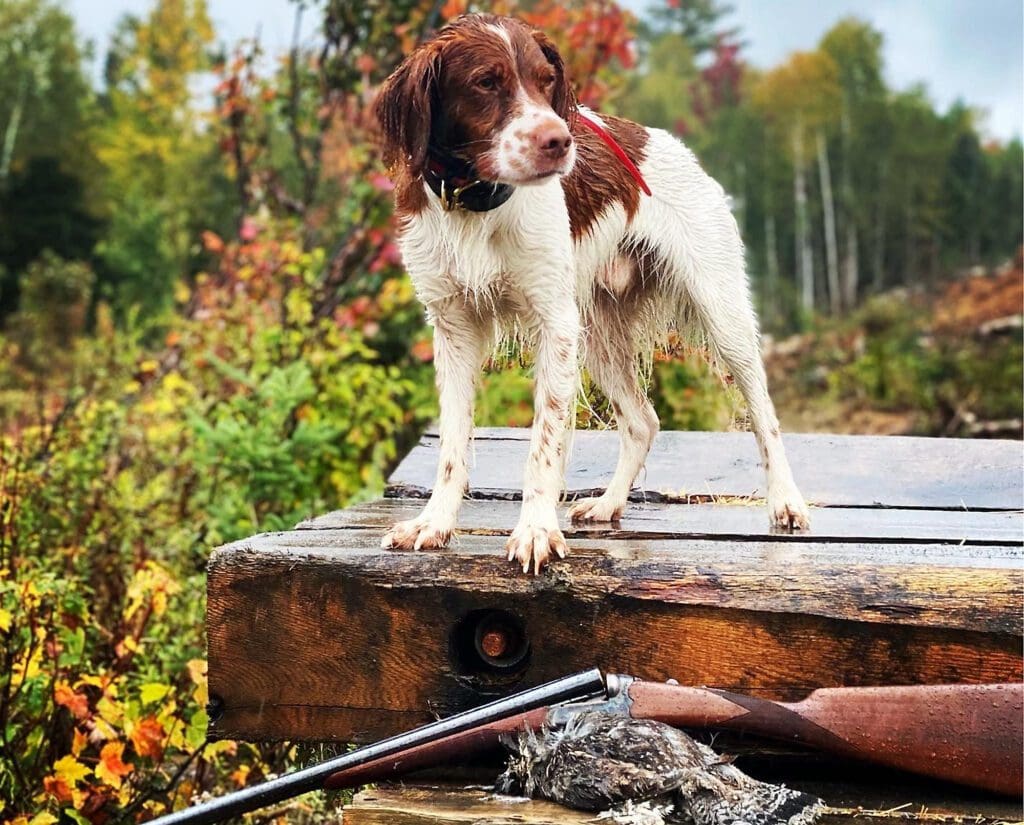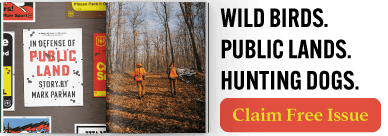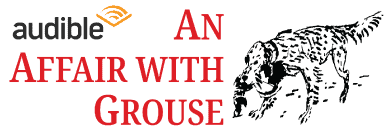Home » Hunting Dogs » How Dogs Develop on Ruffed Grouse – A Guide to Preparing a Dog for Grouse Hunting
How Dogs Develop on Ruffed Grouse – A Guide to Preparing a Dog for Grouse Hunting

Robb Moore has pursued the meaning of life from Tibetan…
Hunting guides and dog trainers share their thoughts on how owners can prepare their bird dog for grouse hunting and how ruffed grouse teach and influence dogs.
Depending on how you choose to look at it, my very first day in the Maine grouse woods with Lincoln was either an embarrassment of riches, or just an embarrassment. I had only bagged one ruffed grouse before that trip, the precious end result of miles and miles of hiking in the rough West Virginia mountains a few hours from our home. While I took great pride in the challenge, I decided that we needed to get ourselves to a place where the grouse contact was just a little less other-worldly and a lot less rare.
Listen to more articles on Apple | Google | Spotify | Audible
So we traveled the next year to the famed North Maine Woods, a timber company paradise of unposted private land—thousands and thousands of acres that are, as a consequential byproduct of the state’s timber industry, absolutely ideal early successional habitat for the prized game bird.
Lincoln and I met Mike Tuminaro, our Maine Upland Guide Service guide, at the entrance to a long logging road and commenced our journey. We weren’t a hundred yards from the trucks when Lincoln must have bumped a bird and it flushed; what had taken me miles of punishing hiking in West Virginia was accomplished in something not much more than 200 seconds of a leisurely stroll in Maine. A half mile later, the same set of circumstances played out on the other side of our path. Already, two birds in the bag, and as we reached a large clearing at the end of the road, I just couldn’t wait to get a few pictures of us with our birds. I broke open my gun, unloaded the shells, took off my pack, and laid everything down against an old stump, asking a bemused Tuminaro if he would document the moment. I looked around for Lincoln. Nowhere to be found. The point indicator buzzed on my handheld, but it pointed only 40 to 50 yards away from us which would still be well within the scrubby field of waist-high brambles we were in, nowhere near the tree line. What was he doing?
I walked in his direction, expecting to find him sniffing something foul or maybe lightening his own load. Thunder exploded about 15 feet in front of me, setting me back on my heels. There I was, with probably the easiest shot at a grouse I’d ever had, with my unloaded gun half a football field away. Slack-jawed, I admired the beauty of its rocketing departure, looked down to see a tuft of white tail through the briars and one canine eye still firmly locked on the scrub and tangle in front of him; he’d pointed and held one of these suckers. I took another step toward him, intending to release him and whoosh, another flush, and me, again, an open-mouthed, dumbfounded Maine newbie who could only watch the flying acrobatic escape. Those two were followed by not one or two more, but four more. My very good boy had managed to find and point and hold six grouse at the same time and there I was, without even a proverbial stick in my hands.
READ: Bird Hunting in Maine, Ruffed Grouse, Woodcock, and Other Small Game
So concluded my embarrassing first lessons in Maine’s grouse woods. The day reinforced for me advice that’s always stuck with me from Linda Ordiway, the small game project leader at the West Virginia Division of Natural Resources, that early season grouse don’t read grouse hunting books for instruction about where they should be and they can literally be anywhere. The episode also reinforced universal counsel from grouse veterans: be ready! In the early season, unbroken broods are at least a possibility and a hunter should always be ready in any given spot for another flush or two after the first.

As luck would have it, our bird contact dipped and then plateaued for the rest of our first trip, but Lincoln and I learned a great deal and I finished as a sophomore dog handler, with Lincoln, as usual, somewhere well ahead of me in his learning curve. Reflecting on our lessons and thinking ahead to our future opportunities, I reached out to a few seasoned veterans of the grouse woods, to get their take on two topics. First, how they’d counsel pointing dog owners and new grouse hunters with how to best prepare their dog for the experience, and then, once a dog has learned to establish a point on a grouse, how to best approach the indicated bird. Jerry Havel and Stephen Faust, of the Pineridge Grouse Camp, and Jason Carter, of Merrymeeting Kennels, based in Maine, offered the following advice for all grouse woods rookies and those of us who have to travel for our opportunities.
Have realistic expectations for your first ruffed grouse trip or trips
First, I asked the guys how many grouse exposures it would take a pointing dog experienced on pen-raised birds or other species of wild birds to figure out grouse enough to consistently point them.
“Oh, hundreds,” was Carter’s immediate reply. Havel and Faust concurred, though all said that could be expected to vary across dogs, depending on their dispositions.
“I have two dogs, one has a lot of point in her, and she’s pretty dependable after a lot of contact, maybe 90 percent she handles well,” Carter said. “The other has just so much drive and a bit less point, he’s a hundred miles per hour in the woods and I’d say he’s 50/50 on grouse. He may not ever truly figure them out.”
“You just have to have realistic expectations for your first trip,” Havel offered. “It could take a dog a couple of days or a couple of years to figure out grouse enough to point them.”
Decide in advance what you want from your ruffed grouse trip
All also counseled handlers new to the grouse woods to figure out in advance what they want from their first trip to the grouse lands of plenty.
“You and I, we care about having finished dogs,” Carter said, “So, for folks like us, you’re better off on a first trip letting your buddy shoot, or maybe just carrying a blank gun. The birds will teach the dogs if you use their first exposures as a way to bridge their previous training on other birds to grouse. They need to figure out that a grouse getting up and leaving is a bad thing. You’re not going to teach them that if you’re shooting wild flushed or bumped birds for them.”
But Carter was quick to add that there are plenty of folks who are worried less about their trip being a learning opportunity for their dog and are more excited about just bagging birds.
“That’s great, too,” he said. “It all depends on what you want.”
I’d concur, based on my own experience. You could also decide to do what I did, and allow for a few early birds that weren’t well handled, and then raise the stakes with subsequent opportunities for your dog. But, I wouldn’t disagree that more discipline in avoiding shooting mishandled birds might have shortened Lincoln’s learning curve. While a smart dog will progress either way, it’s tough to argue that a decision about whether to err on the side of training opportunity or shooting birds early on will either accelerate their development as grouse dogs or work at cross purposes with it.
Get your dog acclimated to ruffed grouse cover before your trip
Havel and Faust stressed the importance for first-timers to get their dogs acclimated to the features of the cover they’ll experience in the grouse woods prior to their first trips.
“I can’t tell you how many times we’ve seen sexy, all-age, large-running Pointers or Brittanys up here turn into boot-lickers because they’re in tight covers for the first times in their lives,” Havel said. “You don’t need to have them on grouse to prepare, just take them for walks in the woods.”
Faust added that there are good ways to use what you have where you live to train them for this.
“Many folks train their dogs on pen-raised birds—that’s all they have, and that’s fine,” he noted. “Just start putting those birds in the woods instead of a field. Get them used to finding birds in the woods in the type of tight, early successional covers you’ll want them to find grouse in later.”
“And having a whoa-broke dog before you come is so important, and great recall,” Havel added. “Those are things that would be good to have solid before coming up and getting in dark and tight covers for the first time.”
Use woodcock as a primer for ruffed grouse
“We all know why we love woodcock,” Havel said, “They are running now a bit more, but they’ll hold for pointing dogs better than grouse, for sure. Use them to build up your dog on holding them, and that helps them prepare for grouse that almost always are trying to run from points.”
Back to considering what counts for success on a first trip, Havel and Faust suggested that first-timers look to woodcock first as dogs are figuring out how to find and point and even hold grouse and woodcock in the covers where they overlap.
“In a first trip, maybe your dog starts pointing woodcock early in the week, and then by the end of the trip, they finally point a grouse,” Havel said. “That would be a great success for a first trip!”
Yet, all that presupposes your dog is already familiar with woodcock.
“I think they probably smell like their splash,” Carter said.
Even if they hold better, Carter suggests that a dog figuring out the distinctive smell of woodcock and then body versus splash scents might take a while, but he agreed that, once acclimated to woodcock, a dog could use them as a bridge to more challenging grouse, provided the handler and dog have enough opportunities to work woodcock before their first time on grouse.
How to approach a dog on point in ruffed grouse cover
All of our experienced grouse woods veterans said, the most important thing for us to do when we finally find ourselves with our dog pointing and steady on a real live grouse was to not go directly to our dog.
“That’s just what everyone instinctually does, but you have to resist the urge,” Havel said.
“Go wide, always go wide,” Faust said. “That bird has put something directly between it and the dog, maybe a tree, or a rock, a hill, but always something. So, if you go right up behind the dog, you’ve got even less of a chance to make the shot than you’d have otherwise.”
“The other thing is to get up there—wide, yes—but go fast,” Havel added. “As soon as the dog is on point, that bird is likely running away. Get on up there as quickly as you can.”
“All of the worst predators for grouse are in the air, so you have to go quick up on them to get them to fly, something they’ll only do more as a last resort,” Faust added.
Carter supplied some parting safety advice for those moments when you’re moving in on a bird your dog has successfully pointed.
“Stay in shooting lanes as you navigate,” he said. “Grouse often get up in a low-and-go manner. Be careful shooting low. The ‘no sky, no die’ principle should be followed. Everything we care about is head high and below. Keep your barrel up. Have open conversations with your buddies about muzzle control. We are all guilty now and again and should hold one another accountable.”
Finally, Carter says we are most apt to deliver the avian coup de grace for our trusty canine companions, who have held up their part of the bargain by pointing these crafty denizens of forest, when we “learn to see the bird and ignore the forest.”
“Force yourself to look hard at the bird,” he added.
He quotes his shooting instructor for what he thinks is the most important zen wisdom for a handler moving into those seconds of bliss and excitement after their dog has done its part: “When you’re lookin’, you’re cookin’. If you’re thinkin’ you’re stinkin’,” he said. For this shooter, at least, there is no more true or succinct piece of advice to follow to give our developing grouse dogs their favorite reward for a job well done.
Robb Moore has pursued the meaning of life from Tibetan Buddhist monasteries in the Kathmandu valley to the ivory towers of the academy, to Christian ritual as clergy, and hospital bedsides. Recruited as a bird hunter in his mid-40s by his spunky Brittany pup, Lincoln, he is still on the hunt, but only for birds, his heart having found its rest in walking meditation and the Tao of Bird Dogs. [More musings at amanandhisbirddog.com/blog]




Great advice for anyone new to hunting grouse to set your dog up for success.
Solid no nonsense field training for amateur dog handlers that still relates to how veterans build a solid foundation in a dependable bird dog.
I hunted a 10 month old well bread pointer in the UP. First day of hunt he pointed steady, and I walked up to him on a logging trail. Two ruffs jumped up about 30 feet in front and I dropped them both. He was a great grouse bird dog. No training was required other than whoa training. Natural retriever on those birds. It is in the blood boys. He was medium range and hunted pretty close in the UP woods. Later on quail in Mississippi it took a weeks hunting to get him acclimated to quail in lots of birds. He was a good quail dog but took a little exposure to finish him. Was hunting him with some top dogs in Mississippi and he was to become a good Quail dog. I also killed lots of woodcock in the UP that held nicely to point. Good breeding just needs hunting and they will train themselves. It is not a science.
Lots of good advice in this article. I just finished my 50th year Grouse/Woodcock hunting in the LP and UP behind GSP’s and Luellen’s. 2024 was second only to 2015 in our experience in Cheboygan County (LP) measuring flushes and birds bagged. Typically in our area Grouse are less likely to run, probably because their primary predators are Coyotes and Bobcat. This year and in 2015 we had a lot more runners as described in the article….due to the unauthorized and unacknowledged (by the MIDNR) presence of Wolves (in the LP), which drive out the coyotes. Fun fact: We find it difficult to film the action; but, we do time it….Early season birds average 0.4 seconds from first wingbeat to visual disappearance in the woods.